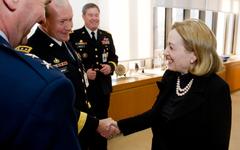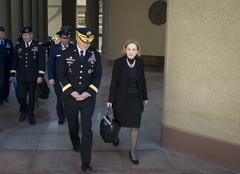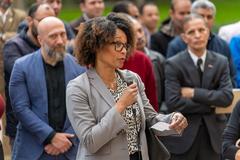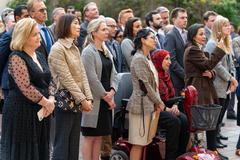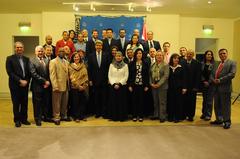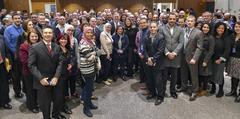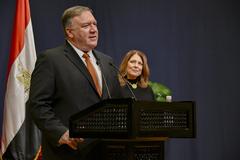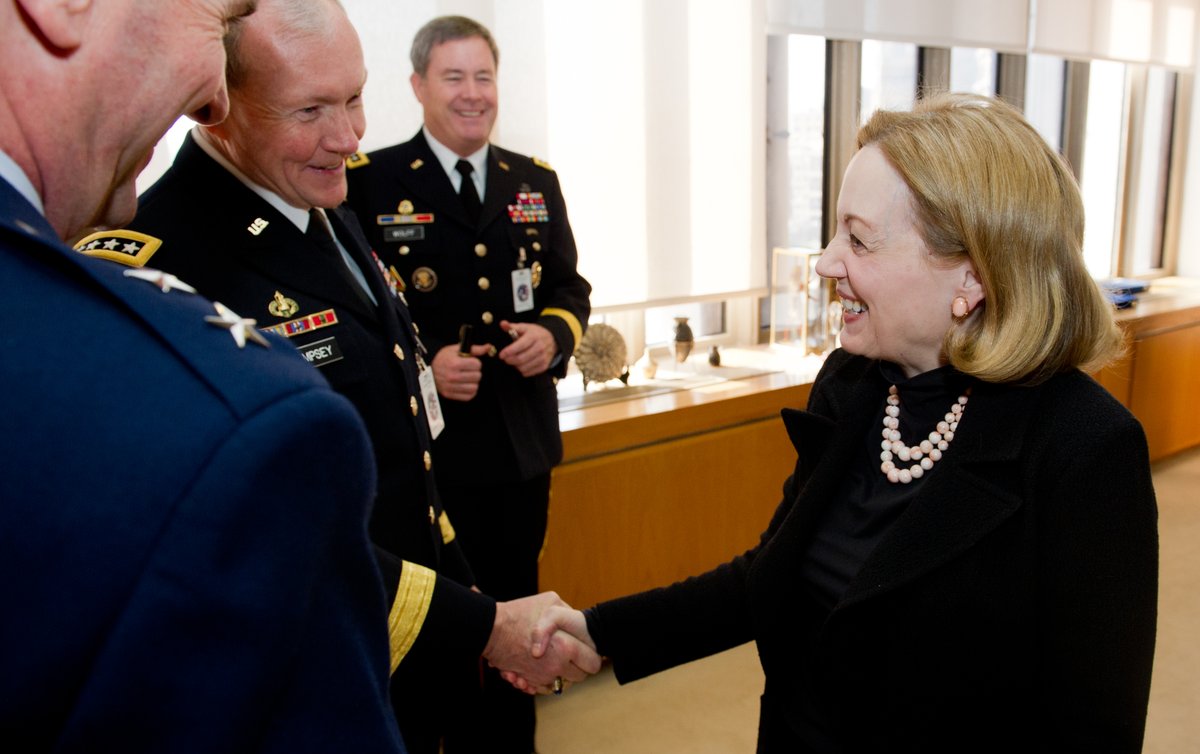
Embassy of the United States Cairo: Visiting Hours, Tickets, and Visitor Information
Date: 15/06/2025
Introduction
The U.S. Embassy in Cairo is a cornerstone of the enduring diplomatic relationship between the United States and Egypt. Established as a consular presence in 1849, the embassy has navigated a complex political landscape and now serves as a vital center for diplomacy, consular services, and cultural exchange. Situated at 5 Tawfik Diab Street in the secure Garden City district, the embassy is both an architectural landmark and a hub for American-Egyptian cooperation. While public access is limited due to stringent security protocols, understanding the embassy’s history, significance, and visitor procedures can enhance your experience in Cairo.
For more details on the embassy’s history and guidelines, refer to the U.S. Department of State Egypt history page, the U.S. Embassy Cairo official website, and insights on the building’s architecture from DOCOMOMO US.
Table of Contents
- Introduction
- Early U.S.-Egyptian Diplomatic Relations
- The Embassy’s Growth and Modern Role
- Visiting the U.S. Embassy: Hours and Appointment System
- Security, Accessibility, and Visitor Tips
- Nearby Cairo Attractions
- Strategic and Cultural Significance
- Embassy Services and Crisis Assistance
- Architectural and Security Features
- Frequently Asked Questions (FAQs)
- Conclusion
- References
Early U.S.-Egyptian Diplomatic Relations
The U.S. established its first consular post in Cairo in 1849, during Egypt’s Ottoman era, appointing Daniel Smith McCauley as the first U.S. diplomatic agent. Despite Egypt’s status as a British protectorate from 1882, the U.S. maintained its presence and officially recognized Egypt’s independence in 1922. That year, J. Morton Howell became the first official American diplomatic representative, marking the elevation of U.S.-Egyptian ties (history.state.gov).
The Embassy’s Growth and Modern Role
In 1946, the American Legation in Cairo was elevated to full embassy status. Somerville Pinkney Tuck Jr. was appointed the first U.S. Ambassador to Egypt, underscoring the importance of the post-World War II relationship. The embassy’s history is closely intertwined with regional events, including the formation of the United Arab Republic (UAR) with Syria in 1958 and the temporary severance of U.S.-Egyptian relations following the 1967 Arab-Israeli War. Diplomatic ties were restored in 1974, beginning a new era of partnership and cooperation (history.state.gov).
The embassy complex, designed by Andre F. Houston and completed in the 1980s, reflects modern security standards and architectural significance (docomomo-us.org).
Visiting the U.S. Embassy: Hours and Appointment System
Location:
5 Tawfik Diab Street, Garden City, Cairo, Egypt.
Contact:
- Phone: +20-2-2797-3300
- Email: Available via the official embassy website
Hours:
The embassy operates Monday through Friday, typically from 8:00 AM to 4:00 PM (some sources note 7:30 AM to 4:00 PM). U.S. and Egyptian public holidays are observed—confirm current hours on the official website.
Appointment System:
All visits require prior appointments for visa interviews, consular services, or notarial services. Schedule appointments via the embassy’s online system (eg.usembassy.gov). Walk-ins are not accepted except for emergencies involving U.S. citizens.
Access and Ticketing:
The embassy does not offer public tours or general ticketing. Entry is by appointment only, with no general admission.
Security, Accessibility, and Visitor Tips
Security Protocols:
- Required Identification: Bring a valid government-issued ID (passport or Egyptian national ID).
- Prohibited Items: No electronic devices (phones, laptops, cameras), large bags, food, or sharp objects. No storage facilities are available—plan accordingly.
- Screening: All visitors are subjected to metal detectors and bag inspections.
Dress Code:
Dress modestly and professionally out of respect for local customs. Covered shoulders and long pants/skirts are recommended.
Accessibility:
The embassy is accessible to visitors with disabilities. Notify the embassy in advance to arrange necessary accommodations.
Transportation:
Accessible via taxi or ride-sharing services. No on-site parking is available.
Health Protocols:
During health advisories, masks and temperature screenings may be required. Sanitizing stations are available.
Travel Tips:
- Arrive 30 minutes early to allow for security checks.
- Organize documents and appointment confirmations before arrival.
- Monitor local news for security updates and avoid the area during protests or demonstrations.
Nearby Cairo Attractions
While the embassy itself is not open for public tours, its central location in Garden City puts visitors close to several major Cairo landmarks:
- Egyptian Museum: Renowned for its ancient Egyptian artifacts.
- Tahrir Square: A focal point of modern Egyptian history.
- Qasr El Nil Bridge: Offers scenic Nile views.
- Cairo Opera House: A hub of cultural activity.
- The Nile Corniche: A picturesque riverside promenade.
Exploring these sites enriches the visitor experience and provides deeper context to Cairo’s historical and cultural landscape.
Strategic and Cultural Significance
The U.S. Embassy in Cairo is one of the largest American diplomatic posts in the Middle East, reflecting Egypt’s critical role in regional stability, security, and cultural exchange. The embassy supports bilateral cooperation in areas including counterterrorism, economic development, and educational programs such as the Fulbright exchange, managed through the American Center Cairo (ACC) (eg.usembassy.gov).
Embassy Services and Crisis Assistance
The embassy provides essential services to both U.S. citizens and Egyptian nationals, including:
- Passport issuance and renewals
- Emergency assistance for Americans in distress
- Visa processing for travel to the United States
In emergencies, U.S. citizens can call +20-2-2797-3300 or refer to the ACS services.
Architectural and Security Features
Designed in the 1980s by Andre F. Houston, the embassy compound is notable for its blend of modernist architecture and robust security infrastructure. The facility includes perimeter barriers, surveillance systems, and access controls to ensure the safety of staff and visitors (docomomo-us.org).
Frequently Asked Questions (FAQs)
What are the visiting hours?
Consular services are available by appointment, Monday to Friday, 8:00 AM–4:00 PM. Confirm current hours on the official website.
Are appointments required?
Yes, all visitors must schedule appointments in advance, except for emergencies involving U.S. citizens.
Is the embassy accessible to persons with disabilities?
Yes, accommodations are available. Notify the embassy ahead of your visit.
Can I take photos inside the embassy?
No, photography and electronic devices are prohibited for security reasons.
Are guided tours available?
No, public tours are not offered. Learn more about the embassy through official resources and nearby cultural sites.
What should I do in an emergency?
Contact the embassy at +20-2-2797-3300 for immediate assistance.
Conclusion
The U.S. Embassy in Cairo is a vital institution representing the depth and breadth of U.S.-Egypt relations. Although public access is limited, understanding the embassy’s role, procedures, and surrounding cultural landscape can greatly enhance your visit to Cairo. Always refer to official resources for the latest information and travel advisories.
For the most current updates and to explore cultural programs, visit the U.S. Embassy Cairo official website. Download the Audiala app for enhanced travel tips and cultural insights.
References
- U.S. Embassy Cairo Official Website
- U.S. Department of State Egypt History Page
- DOCOMOMO US Entry on the Embassy Building
- Egyptian Ministry of Tourism
